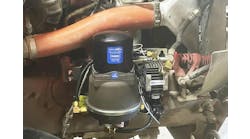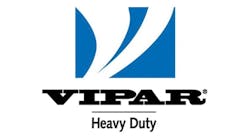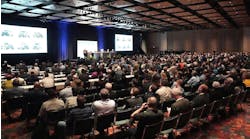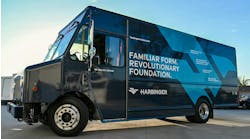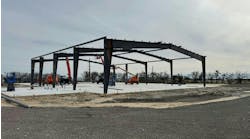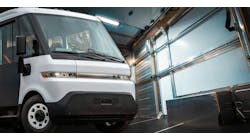Consensus among CV OEMs, aftermarket suppliers and distributors is that 2019, certainly the first half, will be just as good as 2018—and that’s saying something. Regardless of how long the good times last for new equipment builders and dealers, the wave that’s cresting now will roll into the 2020s for the aftermarket industry.
“There’s going to be a nice sweet spot of a lot of vehicles down the road that positively impacts the aftermarket,” said MacKay & Co.’s John Blodgett in providing his forecast at Heavy Duty Aftermarket Dialogue, the day-long series of presentations that preface Heavy Duty Aftermarket Week.
This month we have extensive coverage of HDAW but, not to provide any spoilers, here’s a brief introduction to some of the topics that popped up again and again during formal sessions (quotable quotes featured below), exhibit floor conversations and personal chats.
The polite term is “e-commerce” but the subtext is always Amazon—and whether or not the traditional supplier-distributor-customer model can withstand the pricing pressures coming from online retail giants.
• “Nobody likes to say the word ‘Amazon.’ I don’t care about Amazon,” says Walt Sherbourne, VP of marketing for wholesaler Dayton Parts. “Until Amazon puts the inventory in the warehouse instead of me fulfilling it or my distributor fulfilling that order, it’s still not coming directly from Amazon. So the distribution base is getting that win.”
• “The customer makes the ultimate choice where and how to order,” says Stefan Kurschner, senior VP of aftermarket for OEM Daimler Trucks North America. “You have to be prepared for it, and if your customer decides to go somewhere else, you’re not fulfilling a need, and that’s the way to approach any business.”
Of course, an efficient, web-based distribution system relies on common standards, or the ability for everyone to speak the same language in terms of product features and technical details.
• “As a supplier, we’re reinventing our e-commerce site for about the third time, and every time we learn more. What we’re learning are the things that distributors are going to learn when they launch theirs. We need to supply images, and we’re working on the database to do that, and a data management system,” says Carl Mesker, VP of sales for SAF Holland. “We have to adapt to an industry standard, because if you’re going to do this economically there has to be a standard.”
• “At the end of the day, it will benefit the entire value chain and certainly make it easier for our customers to identify what they need quicker and faster,” says Mike Harris, senior VP of sales and branch operations for FleetPride
For distributors, new technologies—both in product lines and in sales platforms—should be treated as new opportunities.
• “The digital platform makes aftermarket a really interesting place to be, because it’s a way of connecting with customers we all have to adapt to,” Kurschner says. “Everybody likes to research and buy on digital platforms, but we also have customers who still like their fax machines, so the aftermarket has to serve both sides.”
• “Certainly, it’s not a cheap endeavor, but one that is needed in the independent channel to keep up the pace with the large OEMs and the larger OEM distribution channels,” Harris says. “For us, the ultimate goal is to allow our counter people in a local market, if they need access to parts beyond what’s in the store, to be able to push a button at 5 pm, and that part be there the next day at 8 am.”
• “Ultimately I’d like to get to a point where we serve our people completely online, to not only be able to look up and identify our product, but our competitors’ as well,” Mesker says.
Ultimately, the business still comes down to getting the right product to the customer in a timely manner—and that demands cooperation throughout the parts supply chain.
• “It’s impossible for us, with a small traveling sales and service crew, to take on full responsibility for training technicians and salespeople how to service and promote different options,” Nielsen says. “So we need the aftermarket salespeople to help us, especially as the technology increases.”
• “There’s no reason why the OEMs won’t share that business with (suppliers), because it’s your componentry, and they’re going to want you to help them make their vehicle more efficient and reliable,” says Davis.
• “My customer is the end-user, but so is my distributor,” Sherbourne says. “Ultimately we’re focused on that end-user and how quickly we get that part to them.”
• “Nobody buys parts in our industry because they like to buy parts. They buy because they have to buy parts,” Kurschner says.
